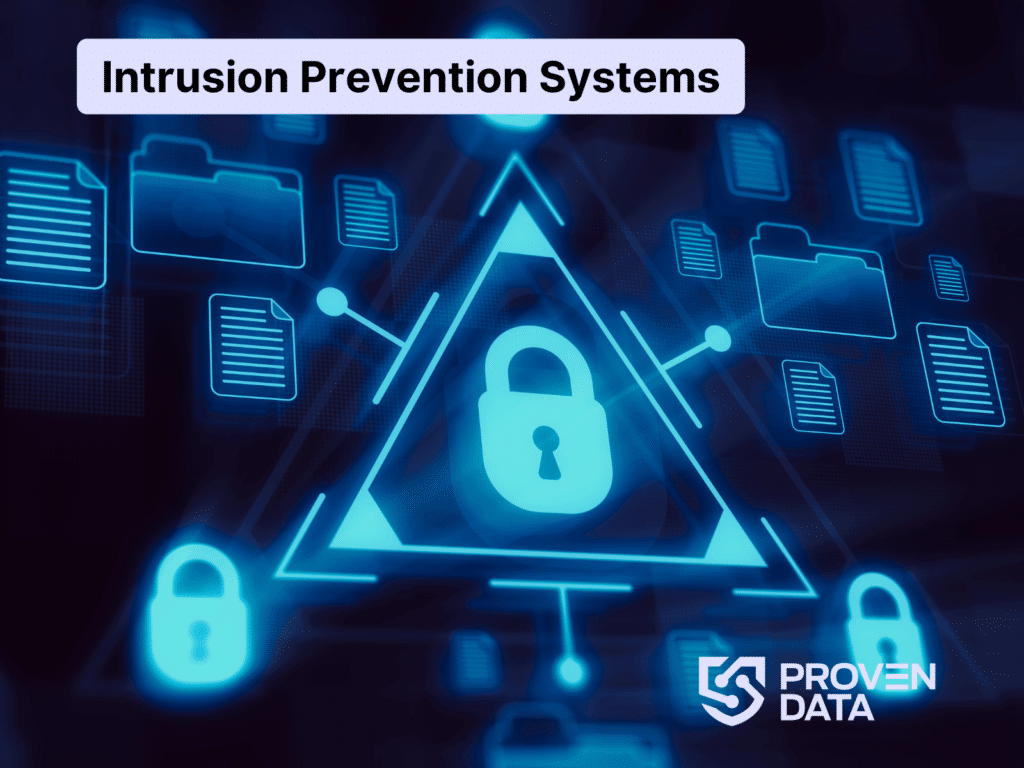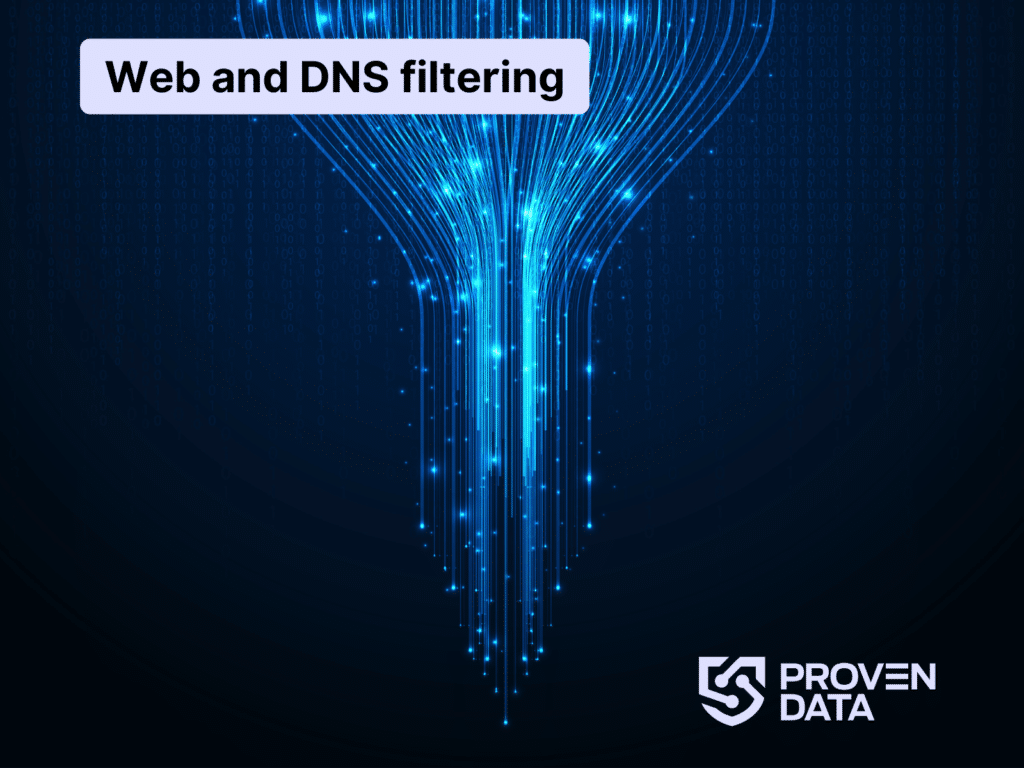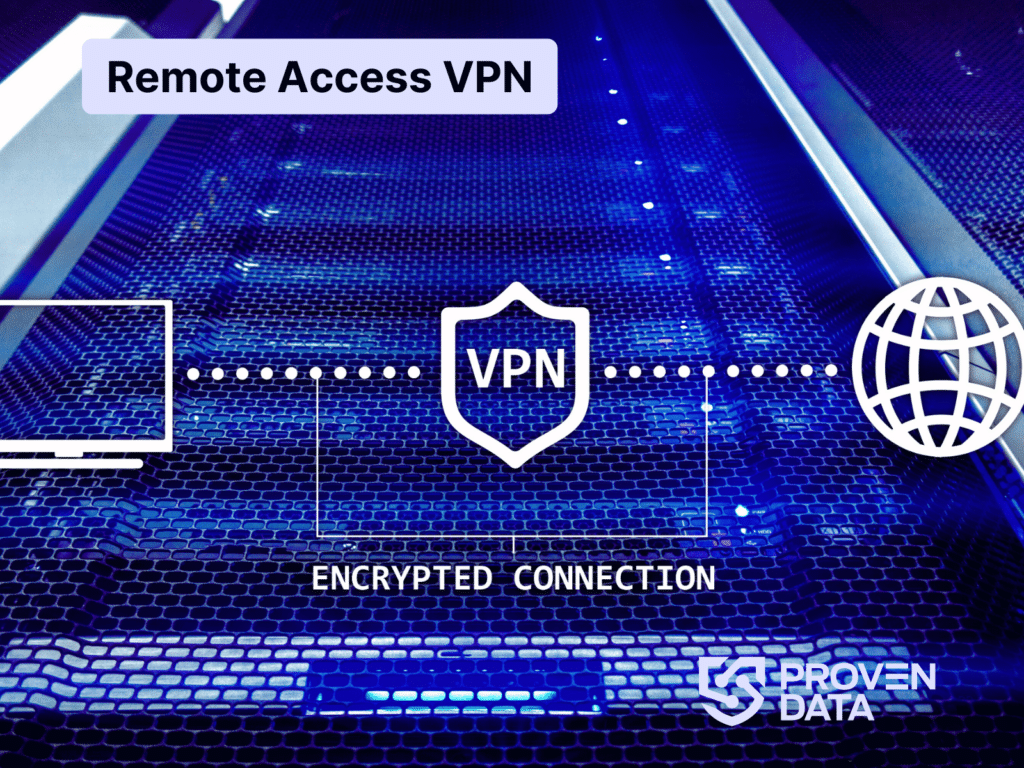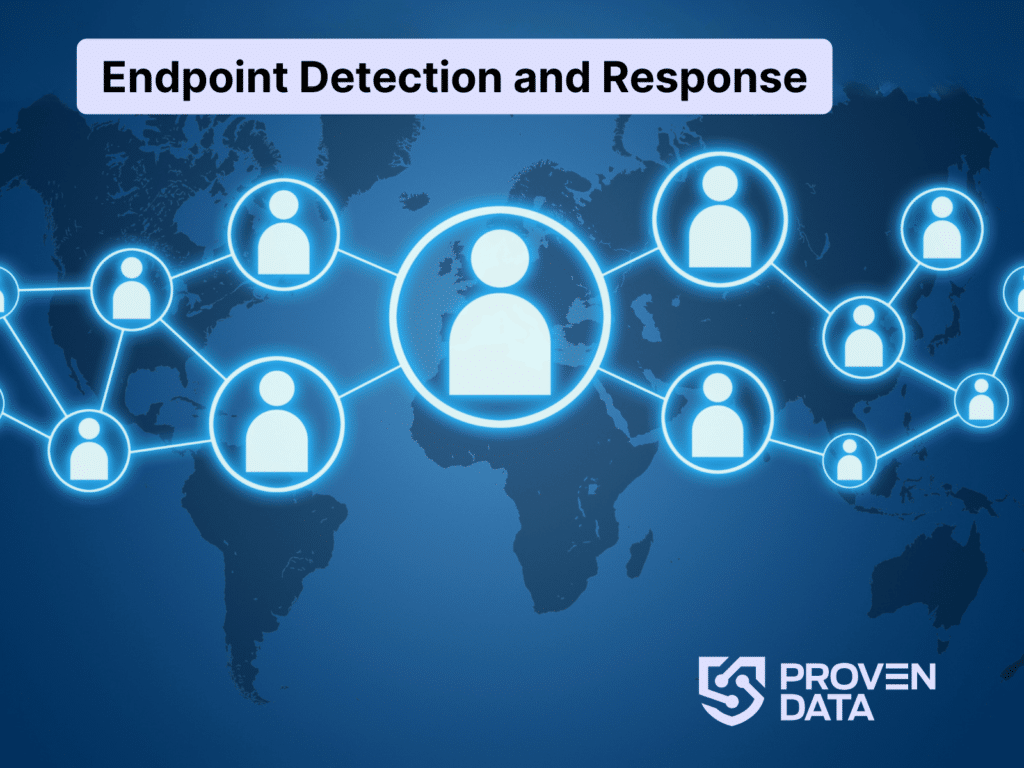Network security forms a critical cornerstone of organizational resilience and data privacy. A well-planned and implemented network security solution ensures a business’s compliance with data security regulations and prevents data breaches and other cyberattacks.
The main benefits of implementing comprehensive network security solutions are because it:
- Provides robust defense against ever-evolving cyber threats,
- Safeguards sensitive information from unauthorized access and breaches,
- Ensures business continuity in the face of digital attacks,
- Maintains the trust of customers and stakeholders in an increasingly interconnected digital landscape.
- Protect against financial losses associated with cyber attacks
- Enable secure remote work and collaboration
- Facilitate the safe adoption of new technologies and digital initiatives
This article delves into the intricacies of network security, exploring its fundamental concepts, essential components, and emerging trends shaping cybersecurity’s future.
What is network security?
Network security encompasses a broad range of technologies, policies, and practices designed to protect the integrity, confidentiality, and accessibility of computer networks and data. It is a robust defense mechanism against an ever-evolving landscape of cyber threats, unauthorized access attempts, and potential data breaches. By implementing a multi-layered approach, network security safeguards the network infrastructure and the valuable assets and information that traverse it.
At its core, network security combines hardware devices, software applications, and carefully crafted security policies, creating protective measures at the network edge and within the internal infrastructure. From firewalls and intrusion prevention systems to advanced encryption protocols and access control mechanisms, each component plays a vital role in maintaining the overall security posture of an organization’s digital ecosystem.
Types of network security
Network security encompasses a wide array of technologies, tools, and practices designed to protect the integrity, confidentiality, and accessibility of computer networks and data. These solutions work together to create a robust defense against potential attacks, unauthorized access, and data breaches.
From traditional firewalls and intrusion prevention systems to more advanced technologies like zero trust architectures and artificial intelligence-driven threat detection, each type of network security plays a crucial role in safeguarding an organization’s digital assets and maintaining operational resilience in an increasingly interconnected world.
Firewalls
Firewalls serve as the primary gatekeepers of network traffic, monitoring and controlling incoming and outgoing data packets based on predetermined security rules. These essential devices are a barrier between trusted internal networks and potentially hostile external environments blocking unauthorized access attempts and significantly reducing the risk of data breaches.
Firewall’s benefits include robust network access control, allowing organizations to define which devices and services can communicate within their networks. This segmentation helps protect sensitive data by restricting unauthorized access. Additionally, many modern firewalls include intrusion prevention systems that can detect and respond to suspicious activities in real-time, further enhancing security by mitigating potential attacks before they can cause harm. Modern Next-Generation Firewalls (NGFW) incorporate advanced features like deep packet inspection, intrusion prevention, and application-aware filtering. NGFWs often integrate multiple security functions into a unified platform, providing more comprehensive protection against sophisticated threats.
However, firewalls also come with notable disadvantages. One significant concern is the potential for traffic bottlenecks, as inspecting all packets can slow down network performance, particularly in larger environments. Another drawback is the challenge of maintenance regular updates and configuration adjustments to stay effective against evolving threats, which can be resource-intensive.
Artificial Intelligence (AI) and Machine Learning (ML)
Artificial Intelligence (AI) and Machine Learning (ML) are revolutionizing the field of network security, offering unprecedented capabilities in threat detection, prevention, and response. These technologies enable security systems to process and analyze vast amounts of data at speeds and scales far beyond human capacity, identifying subtle patterns and anomalies that indicate potential security threats.

AI-powered security solutions can adapt and learn from new data, continuously improving their ability to detect both known and unknown threats.
Machine learning algorithms are particularly effective in identifying zero-day exploits and advanced persistent threats (APTs) that traditional, rule-based security systems might miss.
The impact of AI and ML on cybersecurity extends beyond immediate threat detection; it also plays a vital role in vulnerability management. In network security, AI and ML are applied to several areas, including automated threat intelligence, behavioral analytics, and predictive security. By predicting potential threats and optimizing security resources, organizations can proactively address weaknesses before they are exploited.
Moreover, integrating AI into security information and event management (SIEM) systems enhances the ability to analyze vast amounts of security event data in real-time, enabling faster incident response and a more robust overall security posture. This transformative influence of AI and ML not only improves organizational resilience against cyber threats but also fosters a more efficient allocation of security resources, ultimately contributing to a safer digital landscape.
Intrusion Prevention Systems (IPS)
Intrusion Prevention Systems, or IPS, take network security a step further by actively detecting and blocking known and suspected threats before they can impact the network core or edge devices. IPS technologies employ various methods to identify and thwart potential attacks, including signature-based detection, anomaly detection, and behavioral analysis.

One of IPS’s key advantages is its ability to provide virtual patching, which mitigates vulnerabilities at the network level even before software patches are applied to individual systems. This proactive approach significantly reduces the window of opportunity for attackers to exploit known vulnerabilities.
Antivirus and sandboxing
Antivirus software and sandboxing technologies are crucial in identifying and neutralizing malware. Antivirus solutions focus on detecting and blocking known malware signatures, while sandboxing provides a secure, isolated environment to analyze suspicious files and executables.
Advanced sandboxing techniques leverage artificial intelligence and machine learning algorithms to perform rapid, sub-second analysis of never-before-seen threats. This capability is particularly valuable in countering zero-day exploits and emerging malware variants that traditional signature-based detection might miss.

Antivirus programs provide real-time protection against known malware by scanning files and monitoring system activities to detect and eliminate threats before they can cause harm. This proactive approach helps safeguard sensitive data and maintain system integrity. Sandboxing, on the other hand, creates isolated environments where untested or suspicious applications can run without affecting the broader network. This allows security teams to analyze potentially harmful software in a controlled setting, enabling them to determine its behavior and assess any risks it may pose before allowing it into the production environment.
However, a significant drawback of antivirus solutions is their reliance on signature-based detection methods, which can leave systems vulnerable to new or unknown malware variants that have not yet been cataloged. Sandboxing, while effective for analyzing threats, can introduce latency as it requires additional resources to create and manage virtual environments. Furthermore, sophisticated malware may employ evasion techniques to detect when it is being sandboxed and alter its behavior accordingly, thus bypassing detection.
Web and DNS filtering
Web and DNS (domain name system) filtering technologies are essential in preventing access to malicious websites and protecting users from phishing attacks, drive-by downloads, and other web-based threats. These solutions work by categorizing websites based on their content and reputation, allowing organizations to enforce acceptable use policies and block access to potentially harmful resources.

DNS filtering, in particular, offers an additional layer of security by preventing communication with known malicious domains at the DNS resolution level. This approach can effectively prevent DDOS attacks, including DNS hijacking, tunneling, and exfiltration attempts.
Network Access Control (NAC)
Network Access Control, or NAC, has emerged as a critical security component as networks become increasingly complex and diverse, with many devices connecting from different locations. NAC solutions ensure that only authorized and compliant devices can access the network, effectively managing the risks associated with bring-your-own-device (BYOD) policies, Internet of Things (IoT) deployments, and remote work scenarios.

By enforcing policies that determine which devices can connect to the network and what resources they can access, NAC helps prevent unauthorized access and reduces the risk of data breaches. This capability is particularly important in environments where multiple devices, including personal devices, connect to the network.
Another significant advantage of Network Access Control is its ability to support regulatory compliance. Many industries are subject to strict data protection and privacy regulations, such as HIPAA for healthcare or PCI DSS for payment card information. NAC helps organizations meet these compliance requirements by providing detailed logs and reports on device access and user activity.
By establishing clear access policies and continuously monitoring network activity, NAC encourages organizations to adopt a zero-trust approach to security, where trust is never assumed based solely on device location or user identity. This shift in mindset enhances overall cybersecurity resilience, as organizations become more vigilant in identifying potential threats and responding to incidents. As cyber threats continue to evolve, the importance of robust NAC solutions will only grow, making them an essential component of any comprehensive cybersecurity strategy.
Network segmentation
Network segmentation is a fundamental security practice that involves dividing a larger network into smaller, isolated subnetworks or segments. This approach significantly enhances an organization’s security posture by containing potential breaches and limiting lateral movement within the network.

The traffic between different segments is carefully controlled and monitored, often using firewalls or other security devices. This allows organizations to enforce the principle of least privilege, ensuring that users and systems only have access to the resources they absolutely need. For instance, a company might separate its financial systems from general employee networks or isolate Internet of Things (IoT) devices from critical infrastructure.
Advanced network segmentation techniques, such as micro-segmentation, extend this concept by applying security policies at the individual workload or application level. This granular approach provides exceptional control and visibility, making it significantly more difficult for attackers to move laterally within the network, even if they manage to breach the perimeter defenses.
Remote Access VPN
Remote Access Virtual Private Network (VPN) technology has become an indispensable tool in the modern workplace, especially with the rise of remote and hybrid work models.

A Remote Access VPN creates a secure, encrypted tunnel between a user’s device and the organization’s network, allowing employees to access corporate resources safely from anywhere with an internet connection. This encryption ensures that sensitive data remains protected even when transmitted over potentially insecure public networks, such as Wi-Fi hotspots in cafes or hotels, preventing various cyber threats, such as man-in-the-middle attacks. As a result, employees can access company resources securely from remote locations without compromising sensitive data.
Another significant benefit of Remote Access VPNs is their ability to enforce network access controls. Organizations can implement policies that restrict access to specific resources based on user roles or device compliance. This means that only authorized users can connect to the corporate network, reducing the risk of unauthorized access and potential data breaches.
Although using a VPN can enhance your online security and privacy, it’s important to understand its limitations when it comes to safeguarding your digital assets.
Zero Trust Network Access (ZTNA)
Zero Trust Network Access (ZTNA) represents a paradigm shift in network security. It moves away from the traditional perimeter-based model to one that assumes no user, device, or network should be trusted by default. ZTNA operates on the principle of “never trust, always verify,” applying strict identity verification for every person and device attempting to access resources on a private network, regardless of whether they are sitting within or outside the network perimeter.
In a ZTNA model, access to applications and data is granted on a per-session basis, with continuous authentication and authorization checks. This approach significantly reduces the risk of lateral movement within the network, as each resource access is treated as if it originates from an untrusted network.

ZTNA solutions typically leverage a combination of technologies, including strong multi-factor authentication, device health checks, and micro-segmentation. They often integrate with identity and access management systems to enforce granular, context-aware access policies based on user identity, device posture, and other risk factors.
One of ZTNA’s key advantages is its ability to provide secure access to resources regardless of their location—whether on-premises, in the cloud, or spread across hybrid environments. This makes ZTNA particularly well-suited for modern, distributed organizations with complex, multi-cloud infrastructures.
Endpoint Detection and Response (EDR)
Endpoint Detection and Response (EDR) focuses on protecting individual devices or endpoints that connect to the network. These endpoints, which include workstations, laptops, mobile devices, and servers, often serve as the entry point for cyberattacks and therefore require robust, real-time protection and monitoring.

EDR solutions go beyond traditional antivirus software by providing continuous monitoring and collection of endpoint data with real-time analysis and response capabilities. They use advanced algorithms and behavioral analysis to detect suspicious activities that may indicate a security threat, even if the specific malware or attack method is previously unknown.
When a potential threat is detected, EDR systems automatically respond with a range of actions, from alerting security teams to quarantining affected systems or rolling back malicious changes. This rapid response capability is crucial in containing and mitigating threats before they can spread throughout the network.
Moreover, EDR solutions typically provide detailed forensic information about detected threats, enabling security teams to conduct thorough investigations and understand the full scope of an attack. This data can be invaluable in improving overall security posture and preventing similar incidents in the future.
Security Information and Event Management (SIEM)
Security Information and Event Management (SIEM) systems serve as the central nervous system of an organization’s cybersecurity infrastructure. SIEM solutions aggregate and analyze log data from a wide range of sources across the network, including firewalls, intrusion detection systems, applications, and endpoints. This holistic view of the organization’s security landscape enables real-time threat detection, incident response, and compliance management.

At its core, a SIEM system performs two primary functions: log management and event correlation. The log management component collects, stores, and manages log data from various sources, providing a centralized repository for all security-relevant information. The event correlation function uses advanced analytics and machine learning algorithms to identify patterns and anomalies that may indicate a security threat.
SIEM solutions typically provide real-time alerting capabilities, notifying security teams of potential incidents as they occur. They also offer powerful reporting and visualization tools, allowing analysts to quickly understand the organization’s security posture and investigate incidents efficiently.
Many modern SIEM solutions are expanding their capabilities to include security orchestration, automation, and response (SOAR) features. This integration allows organizations to automate routine security tasks, streamline incident response processes, and improve overall operational efficiency in their security operations centers.EDR solutions go beyond traditional antivirus software by providing continuous monitoring and collection of endpoint data with real-time analysis and response capabilities. They use advanced algorithms and behavioral analysis to detect suspicious activities that may indicate a security threat, even if the specific malware or attack method is previously unknown.
When a potential threat is detected, EDR systems automatically respond with a range of actions, from alerting security teams to quarantining affected systems or rolling back malicious changes. This rapid response capability is crucial in containing and mitigating threats before they can spread throughout the network.
Moreover, EDR solutions typically provide detailed forensic information about detected threats, enabling security teams to conduct thorough investigations and understand the full scope of an attack. This data can be invaluable in improving overall security posture and preventing similar incidents in the future.
Why is network security important?
Network security is not just a technical necessity; it’s a fundamental business imperative that directly impacts an organization’s bottom line, reputation, and long-term viability.
Effective network security offers numerous benefits that extend far beyond simply preventing cyber threats. It reduces the risk of costly data breaches, ensures compliance with increasingly stringent regulatory requirements, and maintains the trust of customers and partners.
The importance of network security cannot be overstated in today’s digital-first world. As organizations increasingly rely on interconnected systems and data to drive their operations, the potential impact of security breaches has grown exponentially.
Protection of sensitive data
Organizations handle vast amounts of sensitive information, including customer data, financial records, and intellectual property. Network security measures prevent unauthorized access, ensuring this valuable data remains confidential and intact.
Maintenance of business continuity
Cyber attacks can disrupt operations, leading to downtime and lost productivity. Robust network security helps prevent these disruptions and ensures that business processes run smoothly.
Preservation of reputation
Data breaches can severely damage an organization’s reputation, leading to loss of customer trust and potential legal repercussions. Strong network security helps maintain stakeholder confidence and protects the company’s image.
Compliance with regulations
Many industries are subject to strict data protection regulations, like HIPAA. Network security is essential for meeting these compliance requirements and avoiding fines and penalties.
Defense against financial loss
Cyber attacks can result in significant financial losses, both direct (e.g., theft of financial data) and indirect (e.g., costs of system recovery, legal fees). Investing in network security is a cost-effective way to prevent these potential losses.
Enablement of digital transformation
As companies embrace new technologies like cloud computing, IoT, and AI, network security provides the foundation for safe innovation and digital growth.
Protection of remote work environments
With the rise of remote and hybrid work models, network security has become crucial in safeguarding distributed workforces and ensuring secure access to corporate resources from various locations.







